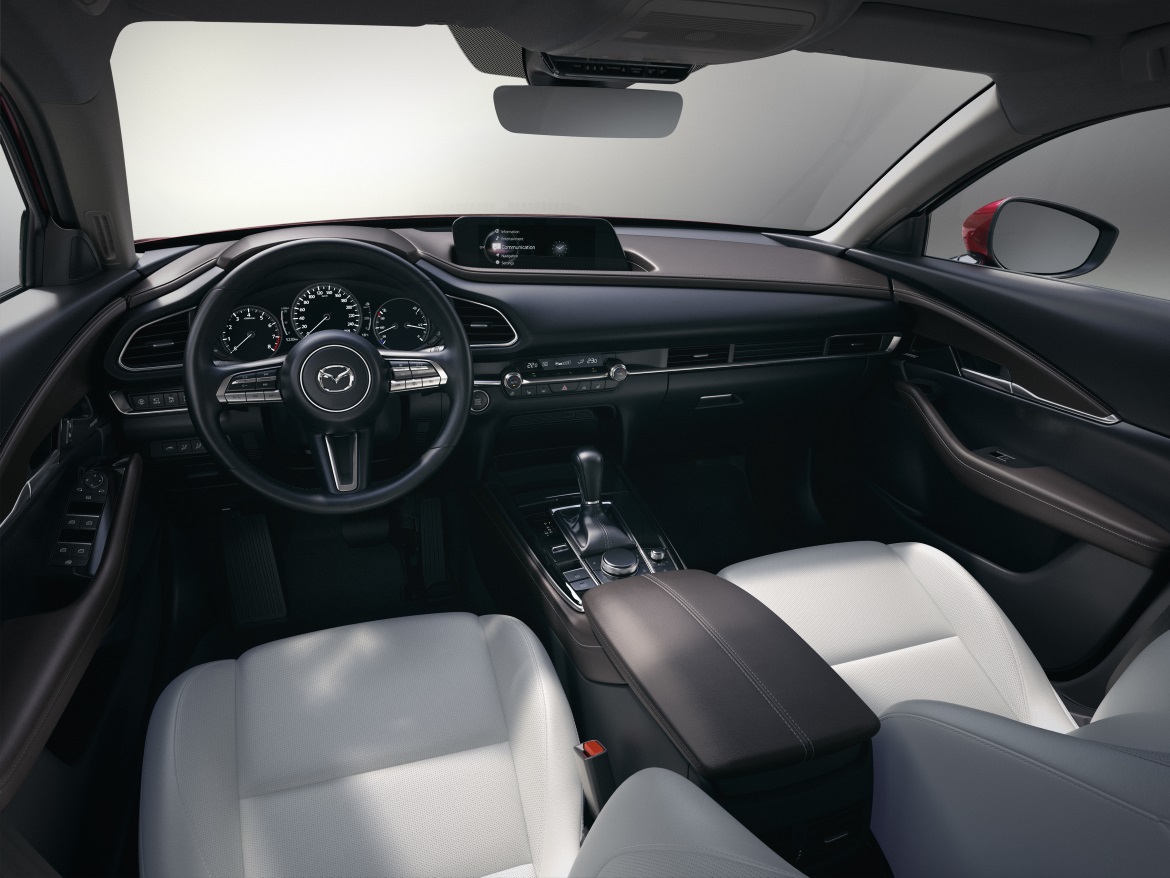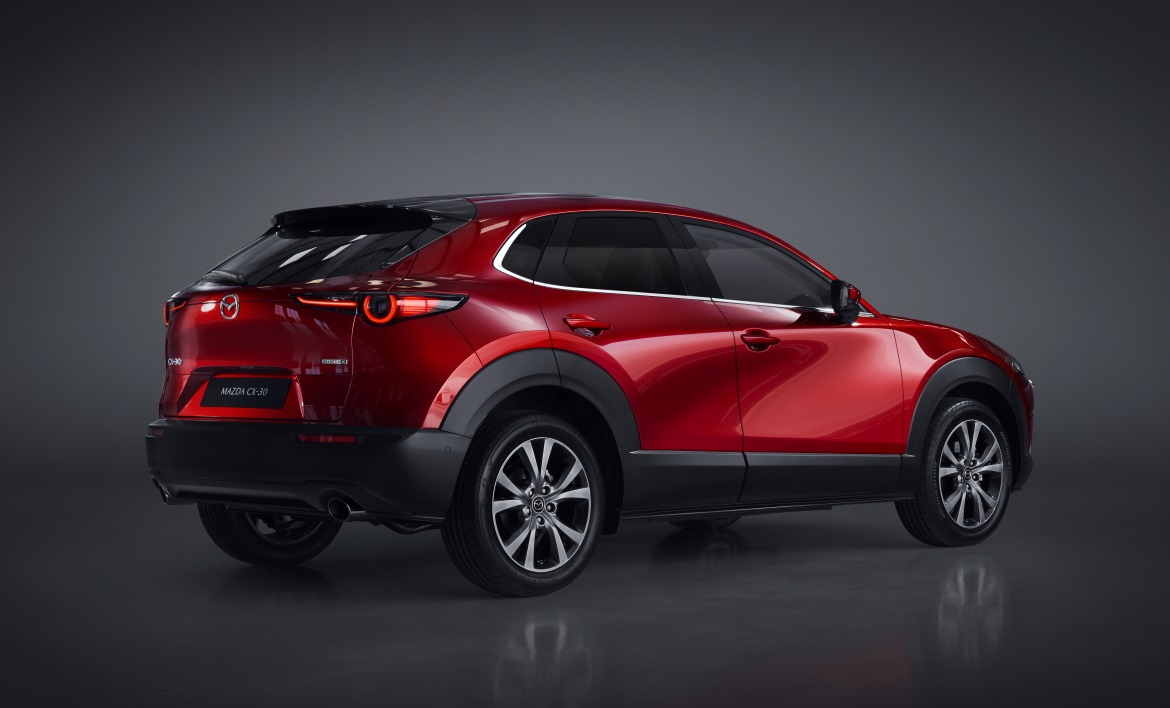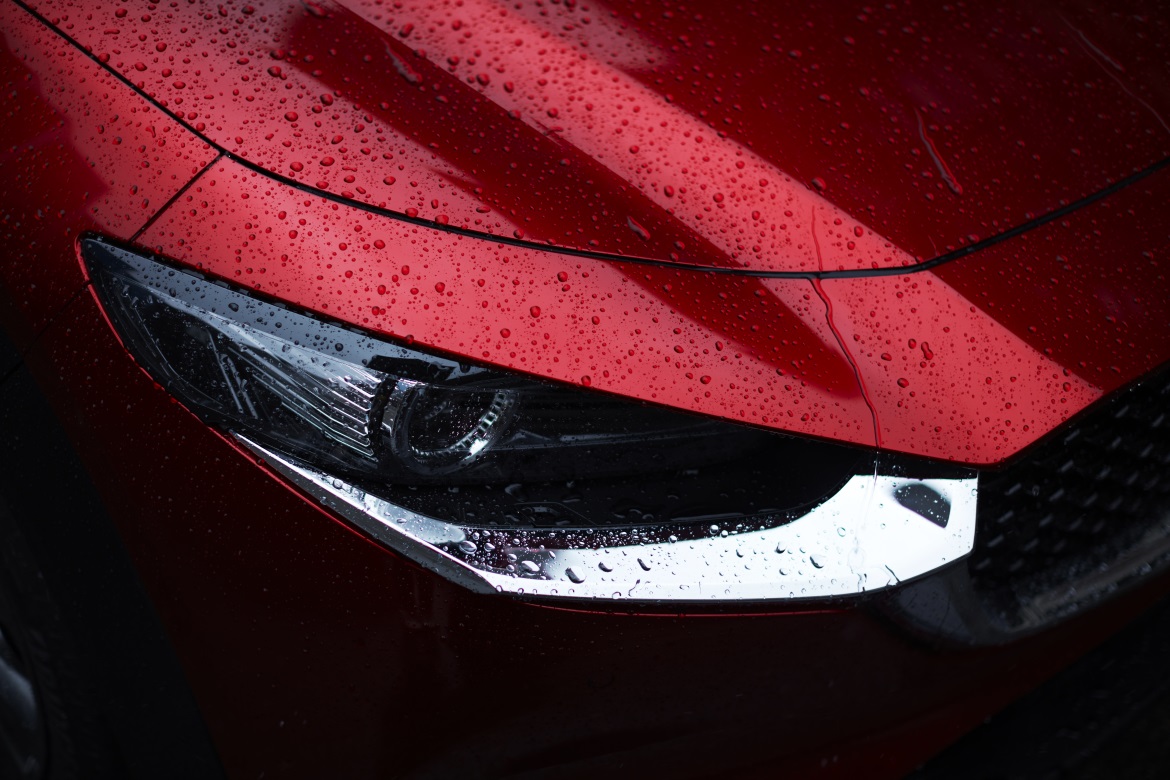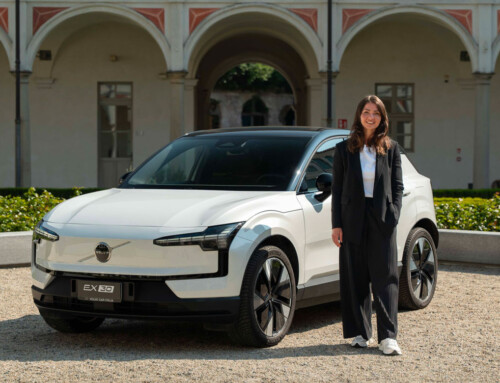Venturing into one of the most popular market segments is always something of a challenge. But in the case of the first real C-SUV out of Hiroshima, the Mazda CX-30, just presented to the Italian public at Turin’s Parco Valentino Motor Show and bigger than the already known CX-3 it would seem that the process has been developed with typical Japanese serenity. Ryo Yanagisawa, head of design for the project, explains laconically: “We never asked ourselves about what other manufacturers were doing. We simply chose the path that best suited our own brand and our own vision”.
This meant, first of all, revisiting the particular handling of the sides proposed on the latest Mazda3 (borrowed from the RX Vision and Vision Coupé prototypes), and modulating it to suit the changed proportions. “For the five-door saloon, we preferred to bend the panel to create a major convexity behind the front end, in order to stress the momentum of the nose. On the crossover, on the other hand, we modelled the forms in reverse to emphasise the rear wheels, which on some versions are also drive wheels, with the aim of giving more solidity to the whole”.
Both vehicles use refined reflexes to design volumes, albeit with different approaches: “Even for the CX-30 patience was needed to continuously verify the effect of the curvature radii hypothesised by the computer on the real car and, vice versa, whether the forms created by our craftsmen, who are almost poetic in the way they sculpt clay, were reproducible industrially”. Yanagisawa explains that the visual framework is also supported by the wide matte grey band under the door, which lowers the perception of the body. It is clear, however, that the real stand-out feature of the design is the play of light and shade.
















